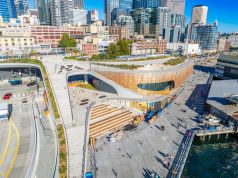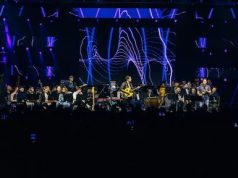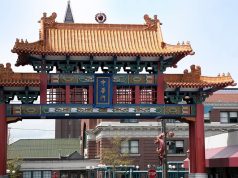 In the new era of Social Media and RSS syndication, Web publishers can cut the ties that bind them to a single, physical Web page, and cut across time-worn practices to new methods of content collaboration. Was this the inspiration for the birth of Crosscut, the decidedly different online news publication by former Seattle Weekly publisher David Brewster?
In the new era of Social Media and RSS syndication, Web publishers can cut the ties that bind them to a single, physical Web page, and cut across time-worn practices to new methods of content collaboration. Was this the inspiration for the birth of Crosscut, the decidedly different online news publication by former Seattle Weekly publisher David Brewster?
For the most part, yes.
Crosscut is a cross between the traditional mode of hand-crafted journalism and the automated, up to-the minute news feeds that break across the Web. Together they carry the headlines most of us count on to live and learn the good life in your corner of the Pacific Northwest.
Closing in on its first year anniversary at www.Crosscut.com , the new era news mill is one of the best kept secrets in regional reporting. “We’re out to rejuvenate local journalism,” says Brewster, “by embracing the Web as an online-only publication rather than just being an extension of an existing broadcast or print product.”
In olden days, NW publications like The Oregonian or The Rocky Mountain News used to behave as if they were state-wide. The idea was cut back over the last 25 years as being too expensive and too difficult for circulation. Here again, Crosscut is crossing the divide. “There is a kind of nation-state of Cascadia of about 15 million people with all kinds of interesting cities, businesses and lifestles,” says Brewster. “The people who live here may have family in Bellingham, or in Eugene, or in Tri-Cities, a summer home on the coast or in Gearhard. At Crosscut, we are knitting together the region.”
Crosscut is also linking in the news as a blend of in-house authored reportage and editor-selected outlinks to the best of Northwest coverage. “You don’t see the Seattle Times telling you when there’s an interesting story in the Seattle P-I,” remarks Brewster, who is happy to be back on the editorial beat after a six year absence when his Seattle Weekly was acquired by Village Voice Media. (In the meantime, he resurrected an old building on Seattle’s First Hill into a performing arts and cultural center known as Town Hall).
“We do have partnerships with Websites where we exchange articles. But we also aggregate news from the region,” he says. “Most publications don’t work this way, The traditional rule of thumb [with hyperlinks], is that you don’t want to let the reader get away. How are you going to sell ads if they link out to somebody else’s site? We are more driven by what readers want. Our feeling is that the Web is all about being swept away into other things, like links to Wikipedia, or other blogs, or the original data somewhere else and we really embrace that.”
Probably the best example of Northwest news at a glance is the Crosscut Newsstand, an eagle eye’s view of regional headlines and stories at a glance. Newsstand is the only place where the headlines are not selected by Crosscut editors. Another section, called “Clicker,” contains stories read and screened by editors. in that sense, Crosscut functions as a digital concierge.
Once registered, readers can comment on articles, and express their viewpoints, even link across, or cross-cut, to other local blogs and stories.
Audio, video, mapping, and radio are all on the drawing board, but editorial excellence comes first. “We have a lot of conversations going on with tech startups in Seattle where we’re saying we want to be a a test driver and help perfect new features in the news.” From a business standpoont, the publication’s 17 investors have given the enterprise 3 years to out it all together. “The ultimate financial formula,” comments Brewster, “will be primarily advertising. We may eventually build an ad network of smaller publications throughout the region. But it w wont be entirely advertising. For instance, Crosscut will also be putting on conferences.” Now that’s a new media plan. [24×7]



















